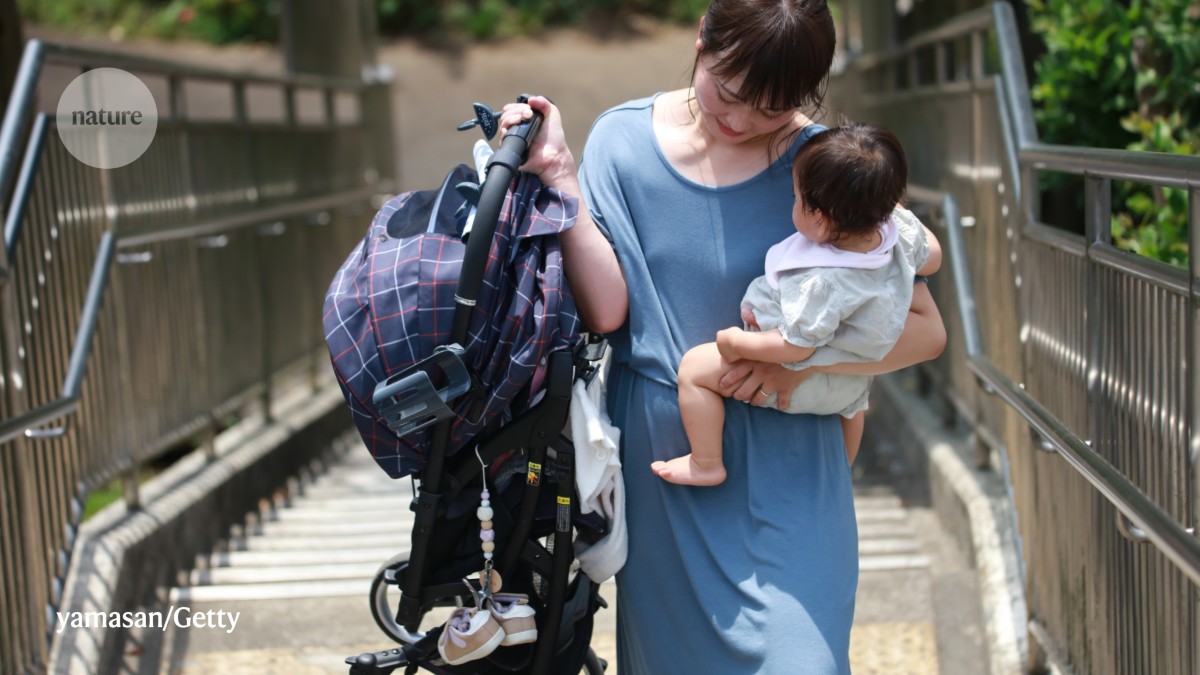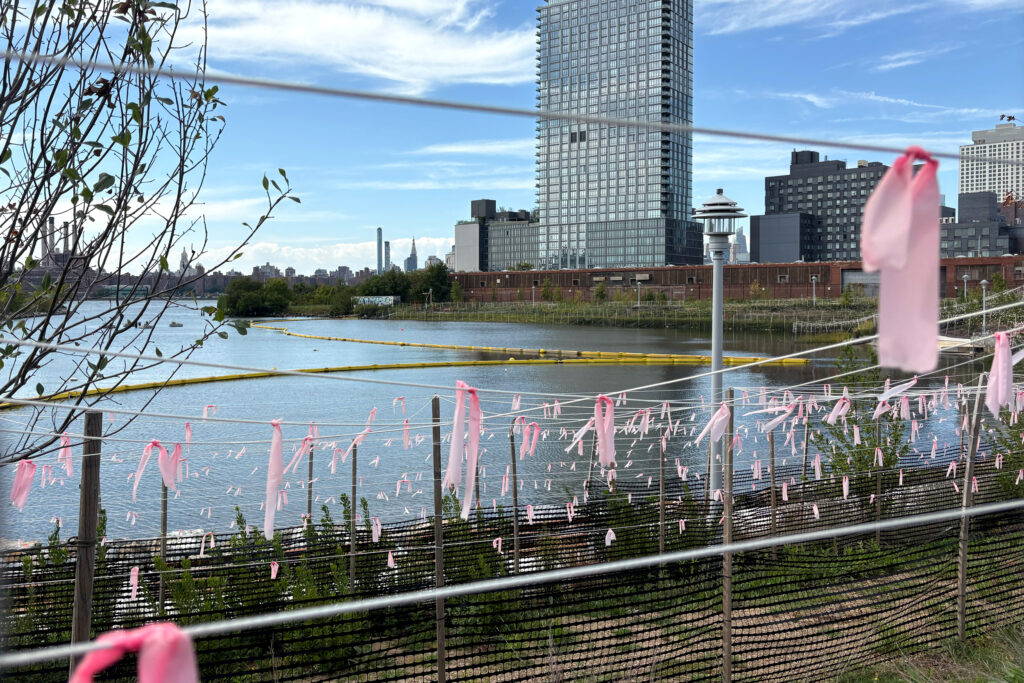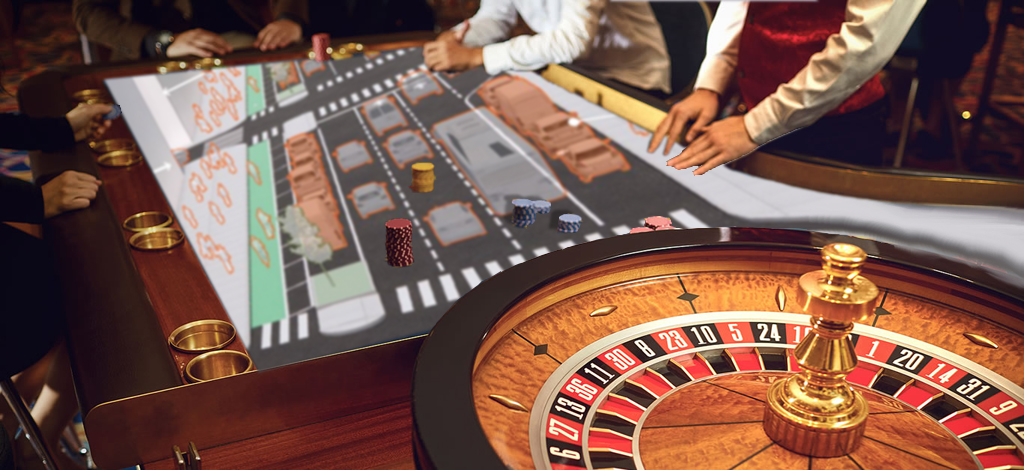#urban-planning
#urban-planning
[ follow ]
fromFast Company
5 days agoThe safest intersection on Earth (and why half the infrastructure profession hates it)
The roundabout question Roundabouts are one of the many Planner vs. Engineer debates, and it happens to be a very important issue where emotions cloud good judgment. As much as I criticize the engineering profession, they are generally correct on this one. But that wasn't always the case. In the late 1990s and early 2000s, the status quo transportation engineering community believed wholeheartedly that roundabouts were not only good, but were silly, dangerous, would lead
Environment
fromianVisits
5 days agoThe 1.3-hour rule: Why quicker trains encourage longer-distance commutes
Regardless of how people get to work or where they live, it turns out that most of us tend to spend the same amount of time commuting to work. Long suspected and at times disputed, a new review of people's commutes across 43 countries found a strong bias toward a daily commute of around 78 minutes (1.3 hours), regardless of how it occurs.
Miscellaneous
fromNature
1 week agoHow cities can keep their cool
Record-breaking heat is now routine. The devastating heatwave that wracked southwestern Europe in 2003 and claimed more than 70,000 lives produced temperatures not experienced in the region since the sixteenth century. Subsequent summers have extended this trend. In 2024, the continent recorded its hottest summer on record. In urban environments, where most of the world's population lives, the problem is especially acute. "If you build a city, inevitably it will be hotter," says Edward Ng, an architect at the Chinese University of Hong Kong.
Environment
fromwww.archdaily.com
2 weeks agoB.RED House / TOOB STUDIO
B.Red House is situated within an urban development governed by fixed planning regulations, where the latitude for architectural self-expression is narrowed by the imperative to maintain a unified overall appearance. The extended sameness across successive building masses has, perhaps inevitably, produced a sense of order bordering on monotonyan environment in which individual houses appear to share a common formal vocabulary.
Design
fromArchDaily
3 weeks agoDesigning for Tomorrow: Nature-Positive Solutions in Urban Environments
The future of urban planning and architecture is promising if the world, collectively, looks beyond the concept of mere sustainability and instead embraces a nature-positive approach. As global population growth drives rapid urbanization-requiring humanity to build the equivalent of a city the size of Madrid every week for decades to come-the construction sector faces a defining challenge: how to build durable, energy-efficient, and resilient urban environments in harmony with natural ecosystems.
Environment
fromStreetsblog
3 weeks agoTransportation Politics Is Inherently Radical - Streetsblog USA
Regular people make political transportation decisions all the time without realizing it. For example, when a person in a car-dependent place decides to go anywhere, they may not feel like they are making a transportation choice, and they may not be aware of how their choice affects others. From their perspective, they are not choosing to drive to a destination; they are just choosing to go there, and they may feel like a car is their only option.
US politics
Artificial intelligence
fromBusiness Insider
4 weeks agoThe computer scientist who coined 'vibe coding' says self-driving cars will 'terraform' outdoor spaces
Autonomous robotaxis will gradually reshape cities by reducing parked cars, reclaiming public space, lowering noise, and improving safety while freeing drivers' attention.
Canada news
fromwww.cbc.ca
1 month agoNew shops and cafes can open in Toronto neighbourhoods decades after being outlawed | CBC News
Toronto will allow small shops and cafes to open in certain residential neighbourhoods, reversing decades-old planning rules to increase local services and street vibrancy.
fromStreetsblog
1 month agoFriday Video: The Utopia of London's Low-Traffic Neighborhoods - Streetsblog New York City
The key to these neighborhoods, which have no exact equivalent in America's biggest city, are "modal filters" that divert car traffic while allowing bicycles and pedestrians to roll and walk freely. Green-Eames shows off two types: The first employs bollards to physically block automobiles, and the second uses cameras that allow certain cars and buses to pass through without paying a fine.
London politics
fromStreetsblog
1 month agoBook Excerpt Special: The Incomplete Freeway Revolt - Streetsblog New York City
Imagine freeways along Lady Bird Lake in Austin, through Georgetown in Washington, along the beach in Santa Monica, through the French Quarter in New Orleans, or bisecting Cambridge between Harvard and MIT. Freeway builders had their sights set on all these places. They would've had their way, too, if not for the meddling protesters who foiled their schemes. The freeway revolt of the 1960s and '70s changed the course of American history, saving some of the nation's oldest and most-beautiful neighborhoods.
SF politics
fromArchDaily
2 months agoFrom Design Fiction to Design Futures: The Changing Role of Architecture in Cultural Production
When Archigram published their fanatical vision for pneumatic cities and walking megastructures in the 1960s, they seemed to be designing buildings. Beneath the surface, the avant-gardeists were pushing culture through radical alternatives to lifestyles and forms of organizing in the city. Laboratories found themselves between the lines of copy on Domus or Casabella magazines, propositions doubling as blueprints for the civilizations to come.
History
fromTime Out London
2 months agoThis part of the City of London will soon get even more skyscrapers
Yes, London can squeeze in more skyscrapers. In fact, over the next decade, it's thought that nearly 600 more high rises could be added to the capital's skyline. There's a one next to the Walkie Talkie that's just been approved, one being built above Roman basilica ruins, and another right next to the Gherkin that's been given the green light.
Miscellaneous
fromwww.archdaily.com
2 months agoScenius 26003 Pavilion / Daryan Knoblauch
Laurian Ghinitoiu + 12 More SpecsLess Specs Laurian Ghinitoiu Text description provided by the architects. SCENIUS 26003 is the winning proposal developed by Daryan Knoblauch for a 10-year infrastructural adaptation plan for the city of Logrono. The competition entry received the first prize after an open call launched by Concentrico and Porto Academy. The Berlin-based studio foresees using temporal pavilions within a biyearly rhythm across the next decade.
Design
fromwww.independent.co.uk
2 months agoNew homes must be built in the right' areas to tackle shortages, Starmer told
From reproductive rights to climate change to Big Tech, The Independent is on the ground when the story is developing. Whether it's investigating the financials of Elon Musk's pro-Trump PAC or producing our latest documentary, 'The A Word', which shines a light on the American women fighting for reproductive rights, we know how important it is to parse out the facts from the messaging. At such a critical moment in US history, we need reporters on the ground.
US politics
fromStreetsblog
2 months agoOur Streets Look Like War Zones - But What if They Were 'Sites of Peacebuilding' Instead? - Streetsblog USA
Car culture has a higher body count than both World Wars combined. So why don't we think of automobility in the same way we think about the bloody and destructive global conflicts that dominate the news - and what would it take to transform our streets into a tool to make our whole society more peaceful, rather than more violent?
Environment
fromStreetsblog
2 months ago'Government Malpractice': Marine Terminal Redevelopment Gets Approval Despite Massive Transportation Concerns - Streetsblog New York City
Mayor Adams's Brooklyn Marine Terminal plan to transform the waterfront south of Brooklyn Bridge Park from the Columbia Street Waterfront to the Atlantic Basin in Red Hook into a mixed-use community with 6,000 new apartments and a modern marine freight hub won the required two-thirds approval from an oversight task force with local lawmakers and civic groups. The plan got through the
New York City
Boston
fromBoston.com
2 months agoZoning to allow taller towers in downtown Boston approved by BPDA
Boston approved downtown zoning changes to ease residential development and small-business approvals, raise height limits in parts of the core, and preserve shadow protections for the Common and Public Garden.
Software development
fromApp Developer Magazine
11 months agoNext level GIS using realtime 3d solutions with Unity and Esri
Combining Esri GIS data with Unity's real-time 3D engine enables interactive visualization and simulation of urban, transportation, and energy systems for planning and asset management.
fromwww.mercurynews.com
2 months agoA car-free stretch of highway in San Francisco leads to recall vote and warning to politicians
During the coronavirus pandemic, the city closed a stretch of a four-lane highway along San Francisco's Pacific Coast and made it an automobile-free sanctuary where bicyclists and walkers flocked to exercise and socialize under open skies and to the sound of crashing waves. But with the post-pandemic return to school and work, resentment grew among neighborhood residents who relied on the artery to get around.
San Francisco
fromFast Company
2 months agoWhy we built cities for cars, not people, and how we can fix that
Car-centric planning has hollowed out our cities. Zoning regulations, freeways, and cheap fuel gave rise to sprawling suburbs and isolated communities, dependent on personal vehicles for even the most basic tasks. It's a system that punishes the poor, marginalizes the elderly and disabled, and makes public life thinner and more precarious. The car promised freedom, and delivered debt, pollution, and dependence.
Environment
Design
fromArchDaily
2 months agoCopenhagen Architecture City Guide: 25 Projects Defining Denmark's Capital of Livable Design
Copenhagen exemplifies people-centered urbanism through high cycling rates, ambitious carbon-reduction strategies, transit-oriented planning, pedestrianized streets, and global leadership in contemporary architecture.
fromArtforum
3 months agoMachinelike Tendencies
AMONG A GROWING ARRAY of government-sanctioned informational systems, motion sensors, acoustic monitors, biometric scanners, and thermal cameras work in tandem with sprawling private networks of data brokers to track social and environmental flows with forensic precision. They measure footfalls, scan license plates, log financial transactions, and inspect the movement of people alongside particulate matter. As sensing technologies increasingly oversee and overwrite the spatial production of contemporary life, proposals for "smart cities" and other data-dependent composites-proliferating since the early 2010s-obfuscate regimented environments of surveillance and control through rosy prospects of connectivity, security, and risk management, all sustained by the tenacious dystopian dream we call information.
Privacy technologies
fromwww.theguardian.com
3 months agoIn Paris it's normal to raise a family in a three-bedroom apartment. Why aren't we building more in Australia?
Given the unaffordable prices of a standalone house in Randwick, a vibrant suburb in the city's east, they opted to renovate a sunroom. We had to take a creative approach and create a flexible third bedroom, Henderson says. Otherwise we would need to move away from here, and we'd be moving further away from jobs, further away from work and schools. The compromise we came up with was to remain where we were, but create a third space.
Real estate
fromwww.dw.com
3 months agoHow can Indian cities become safer for women? DW 09/12/2025
Having lived in Delhi and now in Mumbai, I find Delhi streets are poorly lit and unsafe. I faced ogling, eve-teasing [public sexual harassment] and inappropriate touching on buses while I was a college student. Even in upscale areas, I was chased by drunk men. You are always on high alert, especially after 8:30 at night,
Women
fromianVisits
3 months agoBrixton's lost motorway: Exhibition reveals Lambeth's 1960s housing plans
As the exhibition explains, the council was granted new powers to direct local development in 1963, and its new department was led by a London County Council architect, Edward Hollamby, giving them a significant advantage when planning large estates. He was more interested in Scandinavian style modernism than the British New Brutalism exemplified elsewhere, and despite what you might see if you travel through the area, was more interested in low-rise developments instead of tall blocks.
London
SF real estate
from48 hills
3 months agoThe six fatal flaws in Mayor Lurie's so-called 'Family Zoning Plan' - 48 hills
Mayor Lurie's rezoning threatens neighborhood character and displacement by privileging real estate investors and upscale high-rises, transforming neighborhoods into a commercialized 'Potterville'.
fromLos Angeles Times
3 months agoCommentary: L.A. parks are too vital to suffer such neglect. Here's your chance to weigh in on a rescue plan
But as I said in my last column, L.A.'s roughly 500 parks and 100 rec centers, occupying 16,000 acres, are generally in bad shape and not easily accessible to many residents. In fact, in the latest annual ranking by the Trust for Public Land, they fell to 90th out of the 100 largest recreation and parks systems in the nation on the basis of access, acreage, amenities, investment and equity.
Los Angeles
fromArchDaily
3 months agoA Natural Childhood: How Architecture Connects Landscape, Culture, and Play
How do nature and landscape dialogue within spaces designed for children? How are architecture and urban design capable of shaping natural atmospheres that integrate practices of play, participation, and exploration? From participatory projects that involve children in the design process to built environments that incorporate furniture adapted to their needs, the conception of spaces for childhood entails the creation of places for encounter, learning, and coexistence.
Design
New York City
fromwww.brooklynpaper.com
3 months agoBroadway Stages owners allegedly bribed city official to scuttle McGuinness Boulevard redesign Brooklyn Paper
Gina and Anthony Argento allegedly bribed Mayor's aide Ingrid Lewis-Martin to halt McGuinness Boulevard bike-lane redesign in exchange for cash and benefits.
fromStreetsblog
3 months agoShort Sunset Dunes Update - Streetsblog San Francisco
The changes will create two clearly defined zones: a Park Zone on the west side and a Multi-Use Zone on the east side. The Park Zone will be calm, designed for walking, yoga, play, and picnics. Non-motorized bikes will be welcome if ridden by children. The Multi-Use Zone will accommodate cyclists, runners, walkers, and e-bikes. Users will be guided to keep to their right side to create predictable movement. Pedestrians will always have the right of way at crosswalks.
San Francisco
[ Load more ]














